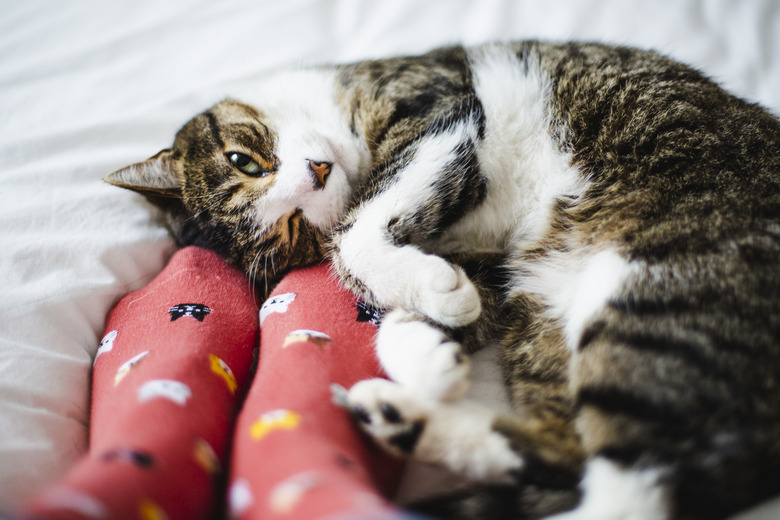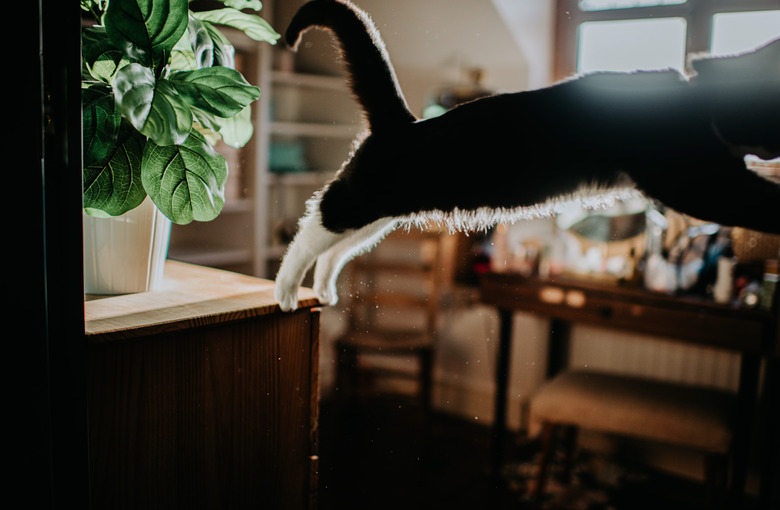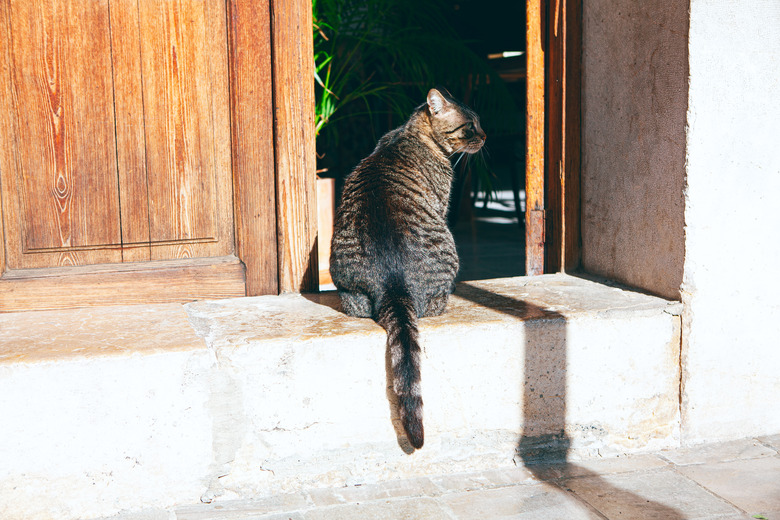Cat Is Walking In Circles And Acting Disoriented
If your cat seems confused or disoriented or is walking in circles, these can all be signs of serious behavioral or medical issues. Always seek veterinary advice immediately if you notice any of these symptoms. Understanding some of the possible causes can be very helpful.
Reasons cats walk in circles
Reasons cats walk in circles
Some possible reasons that a cat might walk in circles are:
- When they are greeting you
- When they are seeking attention
- When they are rubbing to leave a scent mark
- When they are playing
Medical and behavioral conditions can cause a cat to walk in circles. Some circling by cats is normal behavior, but it can often be a sign of underlying health problems or behavioral disorders.
Cats may walk in circles around your legs and feet as a greeting, when seeking attention, or while rubbing to scent mark. Cats often circle before they sleep or run in circles when playing. These are perfectly normal behaviors. Abnormal circling behavior will present very differently, and other symptoms may also be present, such as house soiling, confusion, excessive vocalization, aggression, or fearful behavior.
Behavioral causes of cats circling
Behavioral causes of cats circling
Some behavioral causes and symptoms of circling include:
- Stress or frustration
- Anxiety
- Feline compulsive disorder
- Feline cognitive dysfunction
A cat circling from stress or frustration
If your cat is stressed, they may pace and circle repetitively. This may be accompanied by howling, meowing, or other vocalizations. Environmental factors may cause stress. Cats may become frustrated while seeing birds or other animals through a window or if they are confined to a smaller area than they are used to.
Changing the cat's environment to reduce stressors will improve this behavior. If a cat is in heat, this can be another stressor, which sterilization surgery will resolve.
A cat circling from anxiety
Cats are very sensitive to changes in their environment. New people or animals living in the home can trigger anxiety, and symptoms such as circling and pacing can be early indicators. This may be accompanied by inappropriate toileting, excessive grooming, or scratching walls and furniture. Prepare your cat for any significant lifestyle changes to prevent anxiety-related behaviors, such as circling. Discuss medical and behavioral treatment options with your veterinarian.
A cat circling from feline compulsive disorder
Although rare, cats can suffer from compulsive disorders, manifesting as repetitive behaviors, such as circling. While this is a behavioral problem often related to anxiety, seeing your veterinarian is essential, as medication can improve the condition. Your veterinarian will also want to identify and treat any associated neurological issues.
A cat circling from feline cognitive dysfunction
As cats age, they may suffer from cognitive decline or senility. This is very common in senior cats over 16 years and can affect their memory, awareness, sight, and hearing. Common symptoms are circling and pacing. If you have an elderly cat showing signs of cognitive dysfunction, discuss this with your veterinarian, as medical treatment will help. You can also support your cat by being consistent with routines and avoiding changes in the location of litter boxes or feeding stations.
Medical causes of cats circling
Medical causes of cats circling
Cats will circle, seem confused and disorientated, and sometimes appear distressed when they are sick or in pain. Medical conditions that can cause these clinical signs include:
- Ear infections
- Feline idiopathic vestibular syndrome
- Low blood sugar
- Head trauma
- Brain tumor
A cat circling from ear infections
When an ear infection is the cause of your cat being disoriented and walking in circles, it also makes them appear wobbly and off-kilter. Look for accompanying symptoms, such as nausea and lack of appetite. Other signs of an ear infection include head tilt, head shaking, and ear discharge.
Ear infections have numerous causes, such as bacterial infection, ear wax buildup, tumors, allergies, or a ruptured eardrum. However, a common culprit in outdoor cats is ear mites. Your veterinarian will inspect your cat's ears and treat the ailment accordingly, typically with antibiotics, corticosteroids, or anti-parasitic or anti-fungal medications.
A cat circling from feline idiopathic vestibular syndrome
Vestibular disease affects a cat's inner ear and vestibular system, which helps them to maintain balance and coordination. A cat with this condition will find it difficult to walk in a straight line and will have a lack of coordination. Circling is very common; the cat may wobble, tilt their head, or lean to one side as they move. They may also start drooling due to nausea. This disease is more common in older cats and is genetic in some purebreeds, such as Siamese and Burmese.
It is imperative to take your cat to the veterinarian if you believe they have idiopathic vestibular syndrome. If left untreated, it can cause deafness. Vestibular syndrome usually has an underlying cause, such as trauma, inner ear infection, or inflammation.
The veterinarian will conduct tests to determine the origin of the syndrome and recommend a treatment plan. Although there is no cure for the syndrome, treating any related injury will usually reduce circling, head tilting, and other symptoms over time.
A cat circling from low blood sugar
If your circling cat appears confused, shivers, has seizures, or collapses, they could be suffering from hypoglycemia, a condition in which blood sugar levels drop precipitously. This is typically due to an insulin overdose in cats being treated for diabetes. Other symptoms include trembling, pale gums, and anxiety.
Call your veterinarian immediately. They may have you administer a sugar solution at home to stop the episode and will probably want to see your cat for blood tests and urinalysis as soon as possible.
A cat circling from head trauma
A cat walking in circles may be suffering from a head injury sustained by being hit by a car or from another traumatic injury. Traumatic brain injury initially involves a primary injury, such as a skull fracture and bruising of the brain. The secondary injury occurs over minutes or even days as the brain gets damaged by swelling or bleeding. Prompt attention is crucial to minimize damage and increase your cat's chance of recovery.
Observe your cat for other signs of head trauma, such as bleeding from the ears or nose, lethargy, unusual eye movement, unusual head tilting, or a difference in pupil size. Report your observations to your veterinarian.
Your veterinarian will perform a physical and neurological examination. This may include blood tests and X-rays to diagnose the problem. Inform your veterinarian if your cat is taking medications, like metronidazole, which can cause neurologic symptoms resulting in disorientation.
A cat circling from brain tumor
If a cat circles, paces, or seems disoriented, they may have a brain tumor. Other symptoms common with brain tumors include loss of vision, bumping into things, pain when touched on the neck, hypersensitivity to touch, head pressing, and seizures. If your cat has any of these symptoms, take them to the veterinarian as soon as possible.
Your veterinarian will thoroughly examine your cat and discuss the history of symptoms with you in detail. This will help them identify the cause, as past traumas can cause a buildup of fluid on the brain with similar symptoms. If cancer is suspected, your veterinarian will require further testing, which may include an MRI and biopsy.
Surgery, radiation, or chemotherapy are all treatment options for brain tumors in cats, along with medication to reduce the speed of growth. Quality of life will be of primary concern, and your veterinarian will help you choose your cat's best options.
How to safely handle a disoriented cat
How to safely handle a disoriented cat
If a cat is in pain, confused, or disoriented, they may be challenging to handle. Use caution when approaching your cat, as they may bite or claw out of fear. Wear long sleeves and gloves and cover them gently with a blanket or towel as you place them in their carrier for transport. Let your veterinarian know if they are behaving aggressively so medical personnel can take precautions.
The bottom line
The bottom line
Circling can be a normal cat behavior. However, if you have a cat who is circling in what appears to be abnormal or unusual ways, especially if there are other symptoms, such as disorientation and confusion, seek veterinary advice immediately. Your veterinarian will undertake diagnostic tests to determine the cause and treat your cat accordingly.


